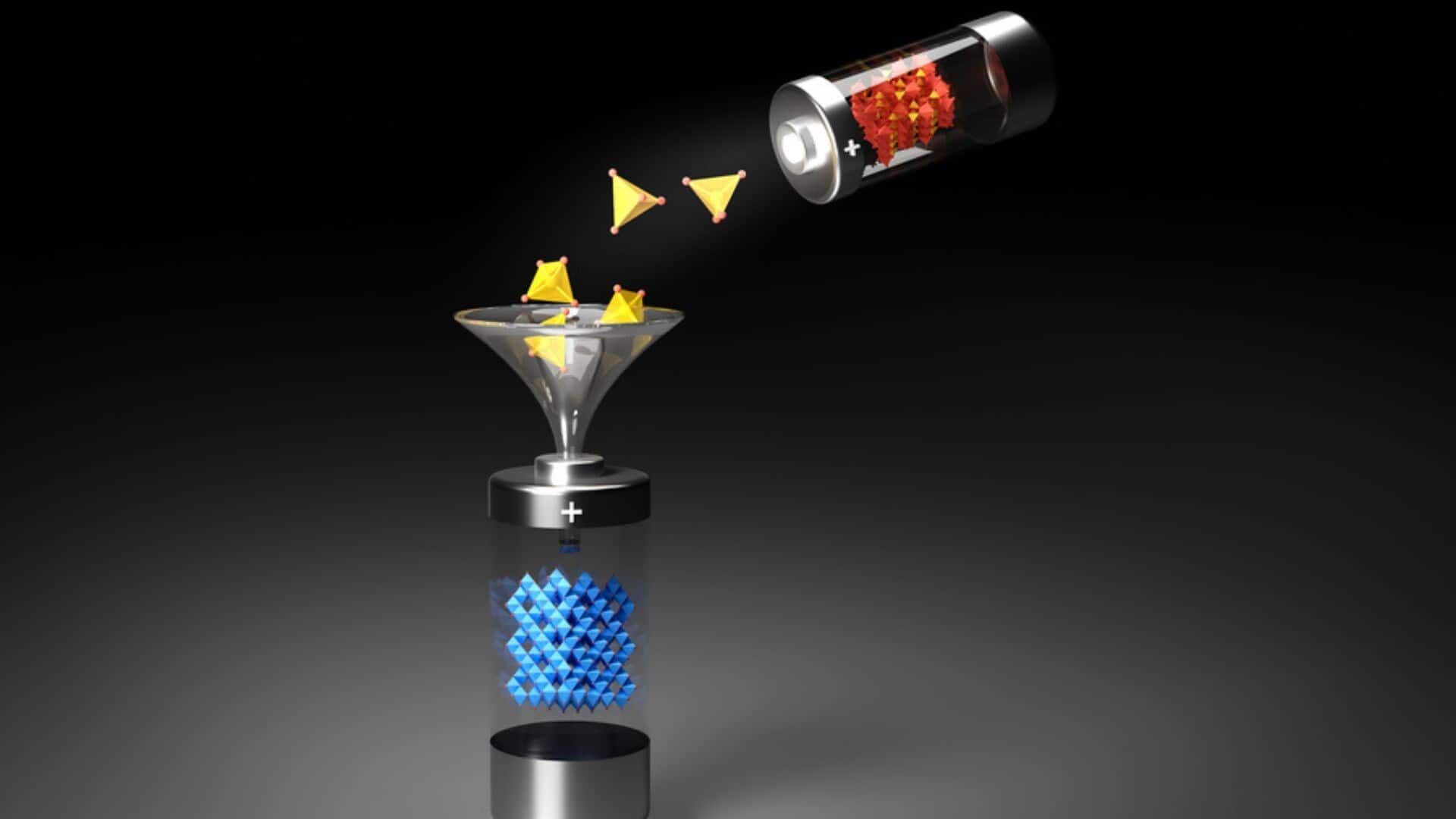
MIT scientists develop low-cost, high-energy battery solution using rock salt
What's the story
Researchers at the Massachusetts Institute of Technology (MIT) have made significant strides in battery technology. They have developed a new class of cathodes using disordered rock salt — a potential breakthrough cathode material for low-cost, high-energy lithium-ion batteries, powering smartphones, renewable energy storage, and EVs. The study, led by Ju Li, Tokyo Electric Power Company Professor in Nuclear Engineering, has investigated this material for over a decade. The team's latest breakthrough involves integrating partially disordered rock salt cathode with polyanions.
Balancing act
New cathode material balances energy density and cycling stability
The newly developed cathode material, known as disordered rock salt-polyanionic spinel (DRXPS), offers high energy density at elevated voltages while significantly enhancing cycling stability. Yimeng Huang, a postdoc in the Department of Nuclear Science and Engineering at MIT, stated their work aims to balance energy density and cycling stability by designing new cathode chemistries. He further explained this material family combines two major types of cathode materials - rock salt and polyanionic olivine - thereby inheriting the benefits of both.
Cost-effective solution
Manganese-based material offers cost and energy advantages
The new cathode material primarily consists of manganese, an element that is significantly less expensive and more abundant than nickel and cobalt, which are commonly used in today's cathodes. Li highlighted that manganese is at least five times cheaper than nickel and around 30 times less expensive than cobalt. He further emphasized its role in achieving higher energy densities due to its abundance on Earth, making it a highly advantageous material for this application.
Energy transition
New cathode material could address global energy challenges
The researchers believe that their breakthrough could be crucial in building the renewable energy infrastructure necessary for a low or no-carbon future. Li emphasized the need for earth-abundant batteries to store intermittent photovoltaic and wind power, stating, "If we want to have true electrification of energy generation, transportation, and more, we need earth-abundant batteries to store intermittent photovoltaic and wind power." He sees their work as a significant step toward achieving this goal.
Technical hurdle
Overcoming oxygen mobility challenge in disordered rock salt cathodes
The MIT team has also addressed a major challenge associated with disordered rock salt cathodes - oxygen mobility. While these materials offer high capacity, they tend to degrade over time due to reactions between mobile oxygen and the electrolyte. To mitigate this issue, Huang introduced phosphorus into the mix, which acts like a glue to keep the oxygen stable and prevent degradation.